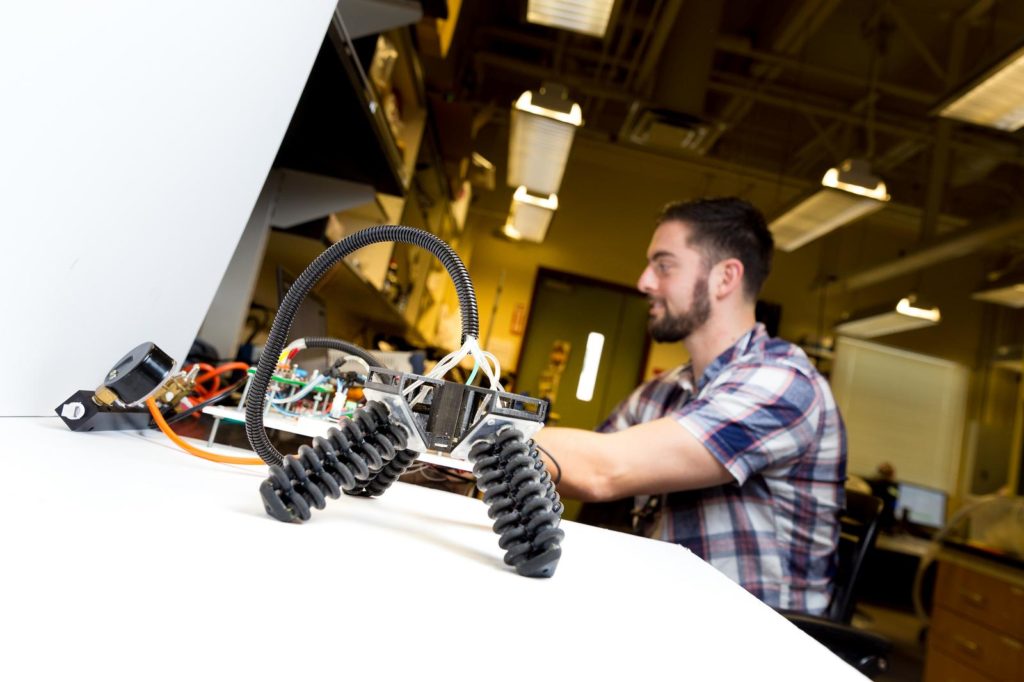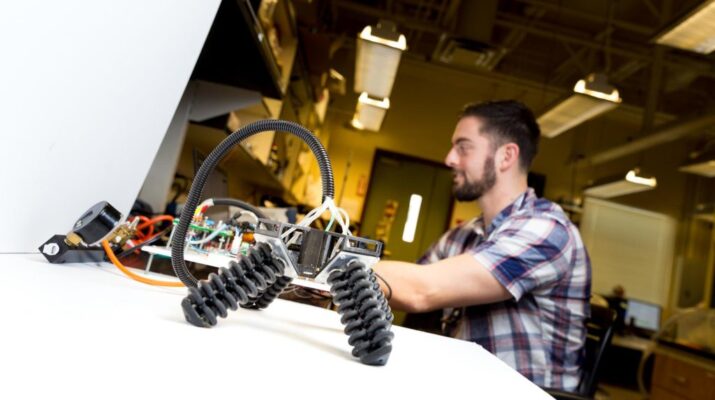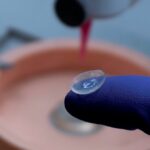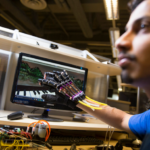

We’ve seen some pretty fascinating 3D printing research in the medical field out of the University of California San Diego over the last couple of years, like a 3D printed blood vessel network and 3D printed liver tissue. But recently, a mechanical engineering professor from UC San Diego has been hard at work on his own 3D printing research that’s less about the human body and more about a robot body.
Professor Michael Tolley and other UC San Diego engineers developed a soft robot with four 3D printed legs: it’s the first of its kind that’s able to walk on different rough terrains, like pebbles and sand, and climb over obstacles. If you’re getting flashbacks to NASA’s PUFFER Microbot, which can crawl up rock inclines and over snow, remember that PUFFER has two 3D printed wheels – the UC San Diego robot is an actual quadruped. Other soft robots can only crawl or shuffle on a flat surface, but since this robot can lift its legs, it’s actually able to walk, which means that it could potentially be used in search and rescue operations, or to capture sensor readings in environments that are dangerous for humans.
Tolley led the research team, which used an Objet350 Connex 3 multi-material 3D printer from Stratasys to print rigid and soft materials together with the same components; this allowed the team to use more complex designs to shape the robot’s soft legs. Tolley explained that it’s cheaper and quicker to 3D print soft and rigid robots, instead of using manufacturing molds. He also said that a new generation of fast and agile robots can be created by combining soft and rigid materials, and that this idea is actually inspired by nature.
“In nature, complexity has a very low cost. Using new manufacturing techniques like 3D printing, we’re trying to translate this to robotics,” Tolley said.
The team’s research was financially supported by a grant from the Office of Naval Research and the UC San Diego Frontiers of Innovation Scholarship Program. Tolley, together with UC San Diego Jacobs School of Engineering PhD student Dylan Drotman, graduate student Saurabh Jadhav, former graduate student Phillip deZonia, and Mahmood Karimi, published a paper, titled “3D Printed Soft Actuators for a Legged Robot Capable of Navigating Unstructured Terrain.”

The abstract reads, “Soft robots have recently demonstrated impressive abilities to adapt to objects and their environment with limited sensing and actuation. However, mobile soft robots are typically fabricated using laborious molding processes that result in limited actuated degrees of freedom and hence limited locomotion capabilities. In this paper, we present a 3D printed robot with bellowed soft legs capable of rotation about two axes. This allows our robot to navigate rough terrain that previously posed a significant challenge to soft robots. We present models and FEM simulations for the soft leg modules and predict the robot locomotion capabilities. We use finite element analysis to simulate the actuation characteristics of these modules. We then compared the analytical and computational results to experimental results with a tethered prototype. The experimental soft robot is capable of lifting its legs 5.3 cm off the ground and is able to walk at speeds up to 20 mm/s (0.13 bl/s). This work represents a practical approach to the design and fabrication of functional mobile soft robots.”
Drotman developed models that would predict exactly how the robot would move, which were later compared to its behavior in a real world environment; he also led the robot’s leg and control systems design efforts. Three parallel, connected actuators, which are just hollow, sealed chambers that can inflate, were 3D printed from a rubbery material to make the legs. Engineers have better control of the robot’s leg movements because the chambers are bellowed: the leg bends if one chamber is inflated and the other two are not. The legs, placed in an X shape, are connected to the robot’s rigid body.
The engineers closely predicted the robot’s real walking behavior ahead of time, which shows that other engineers designing soft robots will be able to make educated decisions about movement. Getting the UC San Diego robot up and moving is tied to the amount of pressure, the order of timing, and which pistons in the four legs are inflated when. The robot is tethered to an air pump and an open source board, but the researchers are currently working to miniaturize both of these so the robot will be capable of independent movement; Tolley said that the “challenge here is to find the right design for the board and the right components, such as power sources and batteries.”
While the robot can’t walk alone yet, the research team ran successful tests on the tethered quadruped: it was able to walk over sand, large rocks, and up inclined surfaces; it’s also able to transition from walking to crawling when entering a space that becomes increasingly more confined. The team will be presenting the robot at the upcoming IEEE International Conference on Robotics and Automation (ICRA) in Singapore. Discuss in the Soft Robot forum at 3DPB.com.
[Source/Images: UC San Diego Jacobs School of Engineering]
When it comes to 3D real estate visualization in the USA, our service provides the perfect solution for bringing property listings to life. Through our platform, you can easily access cutting-edge 3D renderings that showcase your real estate projects in a way that attracts potential buyers and investors. Whether it's residential, commercial, or mixed-use properties, our team of experts uses advanced technology to create immersive visualizations that highlight the best features of your property, making it easier for clients to imagine the space as their own.
Through our website, you can quickly get high-quality 3D real estate visualizations that are tailored to your specific needs. With our help, you'll stand out in the competitive real estate market by offering potential buyers a realistic, interactive view of your property. Our efficient process ensures a fast turnaround time, while our attention to detail guarantees that every aspect of the property is represented accurately, giving you a powerful marketing tool to promote your real estate listings.






